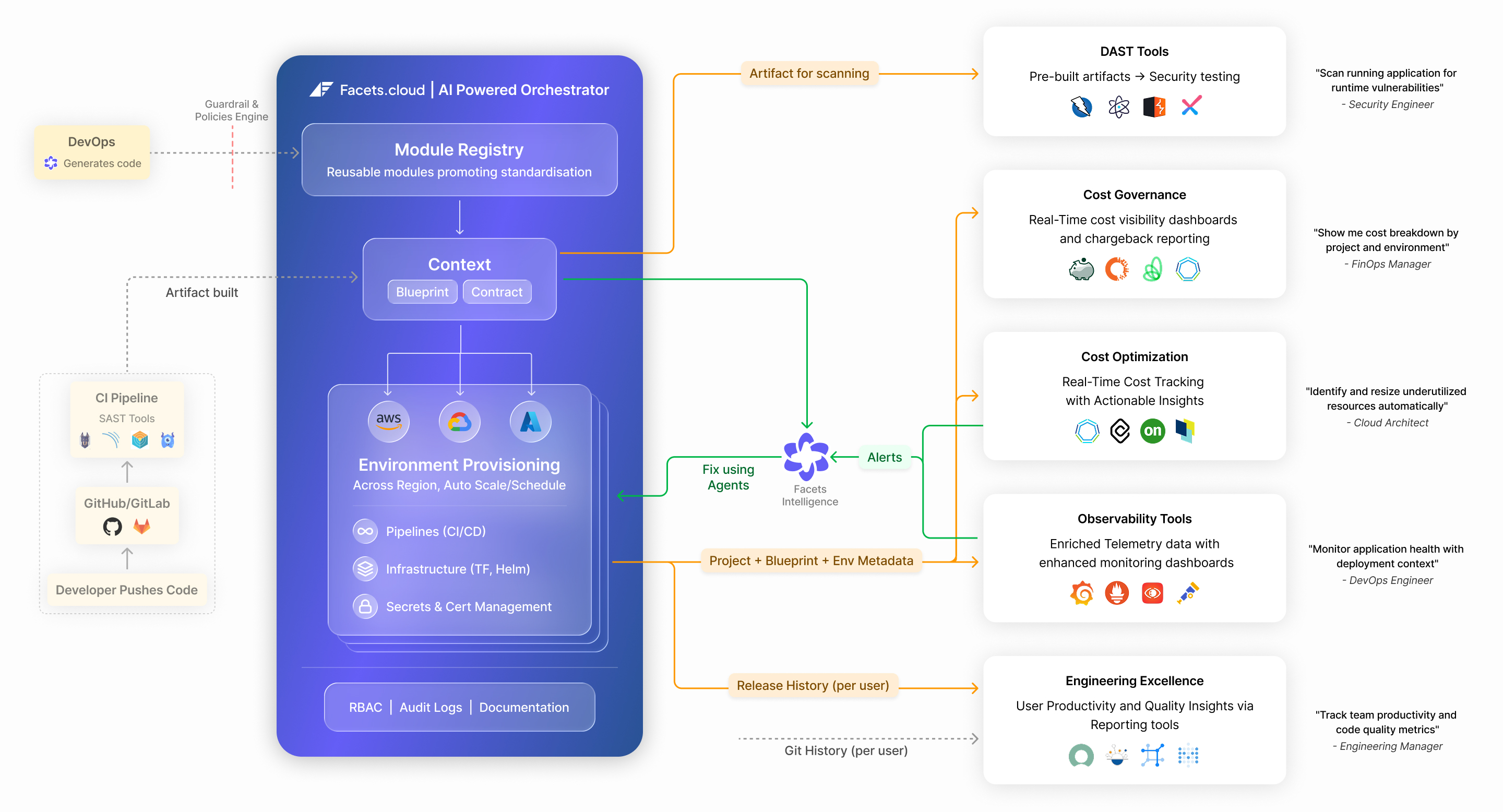Infrastructure Platform Engineering (IPE) simply means "making infrastructure easily available for the developers".
As Gartner mentions, "Infrastructure platform engineering enables I&O teams to deliver scalable, self-service infrastructure resources in a standardized, user-friendly manner."
This directly aligns with Facets' focus on unifying infrastructure delivery through orchestration, automation, and governance.
The Idea Behind Infrastructure Platform Engineering
Infrastructure Platform Engineering (IPE) takes the principles of platform engineering and applies them to the layers that support every digital product. Instead of teams maintaining their own Terraform modules, Kubernetes templates, or CI/CD workflows, IPE introduces shared, reusable components managed as a product. This allows infrastructure to be consumed the same way developers consume APIs or SDKs, intuitively and on demand.
Gartner describes this approach as one that "redefines how organizations interact with their underlying systems by treating infrastructure as a product designed with the customer's experience in mind."
The goal is to reduce cognitive load, enforce security and compliance by design, and make infrastructure provisioning as seamless as deploying code.
Facets' Role in the IPE Ecosystem
Gartner defines four major components of a mature IPE framework and Facets' approach to IPE aligns closely with these pillars:
-
Reusable Infrastructure Artifacts: Facets allows platform teams to define and manage reusable artifacts as contracts - codified units that capture infrastructure, configuration, and policy intent together. These artifacts can be versioned, audited, and reused across projects, promoting standardization without losing flexibility.
-
Infrastructure Components: Catalog Facets automatically catalogs every blueprint and module created within the platform, allowing teams to discover and deploy them through a simple self-service interface or API. This catalog functions as a living library—constantly enriched as teams build new components or improve existing ones.
-
Sources of Truth for Infrastructure: The Facets control plane serves as a single source of truth across environments, integrating with Git repositories and artifact registries to ensure that every deployed state can be traced back to code. This eliminates drift and enforces compliance, making environment management auditable and repeatable.
-
Infrastructure Orchestration: At the orchestration layer, Facets coordinates provisioning, scaling, and policy enforcement across clouds, clusters, and tools. It connects IaC automation with pipelines, configuration systems, and runtime operations, ensuring that every environment remains consistent from creation to teardown.
AI Agents and the Future of Infrastructure Autonomy

Gartner points to an emerging model within IPE where "AI agents autonomously consume IPE resources via APIs, executing tasks and making decisions without human involvement." It also highlights the growing role of standardized formats like Model Context Protocol (MCP) for context management and Agent-to-Agent (A2A) communication for coordination between agents
Facets is actively building toward this direction through Facets Intelligence, which combines autonomous agents with structured, context-aware orchestration. Each agent such as the Release Agent, Debugger Agent, and FinOps Agent—operates within defined contracts that govern how infrastructure state, policy, and runtime data are shared across the system. This contract model provides the standardized context layer that protocols like MCP aim to formalize, allowing agents to reason over infrastructure intent rather than isolated tasks.
This approach mirrors the vision Gartner describes- an evolution from automation to autonomous platform operations, where agents act as intelligent consumers of IPE resources, ensuring that infrastructure decisions remain consistent, auditable, and adaptive over time.
The Bigger Picture
Infrastructure Platform Engineering is not about adopting more tools but about unifying them under a clear model that delivers autonomy without chaos. Gartner's recognition of Facets within this framework reflects the growing importance of orchestration-driven, reusable, and self-service infrastructure.
Facets helps teams achieve exactly that: a cohesive platform where infrastructure is versioned, automated, and consumable by anyone who builds software.
See how Facets supports IPE adoption across teams. Book a founder-led demo today.